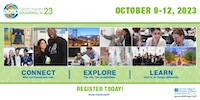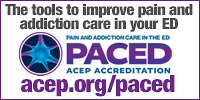- July 1,2015 | ISSN 1940-6967
- The National Association Of Medical Doctors
Featured Sponsors
Superbugs Will Soon Be A Bigger Problem Than Cancer
Antibiotic resistant "superbugs" have become one of the world's most pressing public health concerns. An estimated two million people become infected with drug-resistant bacteria in the US each year. Of those, at least 23,000 die.
In a recent TED Talk, journalist Maryn McKenna — an expert on public health — warns of the many things we will lose as we stand on the "threshold of the post-antibiotic era."
By 2050 antibiotic-resistant bugs could kill an estimated 10 million people each year. Shockingly, this would surpass even cancer.
This puts the numbers of people predicted to die of antibiotic-resistant infections by 2050 into terrifying perspective.
When penicillin — the first antibiotic — was discovered in 1928, it flipped medicine on its head ... in a good way. It was called a "miracle drug," suddenly offering a cure for some of the most nefarious of diseases.
Infections from simple scratches and common cases of strep throat used to kill people regularly. With antibiotics, such infections became easily treatable. Since the 1940s, doctors and patients have been basking in the glory of this life-saving drug, maybe even taking it for granted.
In their understandable excitement, however, doctors began to over-prescribe and patients began to self-treat. In fact, it is estimated that more than half of patients who visit a clinic in the US are inappropriately prescribed antibiotics — often for symptoms caused by viruses that these "miracle drugs" are utterly powerless against.
When antibiotics are overused or used inappropriately — when a patient doesn't finish a full course of treatment, for example, or when low-dose antibiotics are used routinely in agriculture — it helps hasten the spread of resistant bacteria. After a course of antibiotics, some naturally resistant bacteria will be left behind, survival-of-the-fittest style; the more frequently antibiotics are used, the more prevalent these fiercer strains will become. Adjacent bacteria can also acquire resistance by mutating or exchanging genetic material with the resistant strains.
When those treatment-resistant bacteria grow and multiply, they can lead to new infections that then become difficult or even impossible to treat.
Such is the growing concern of public health officials and the impetus behind the launch of the Obama administration's five-year plan to combat antibiotic resistance. The realization that our longstanding approach is no longer working is also fueling the development of novel therapies that sidestep current treatment conventions.
The message is clear: We must act to stop antibiotic resistance, and we must act quickly. Millions of lives hang in the balance.
Articles in this issue:
- Study: Being Obese Or Overweight Lead To 481,000 Cancers In One Year
- Prilosec, Common Heartburn Medications Linked To Heart Attacks
- Meet The Americans Who Prefer to Go Uninsured
- The Art Of Handling Difficult Patients
- Will Doctors Be Able To Escape Random Drug Testing?
- Dr. Evan Levine: Tarnishing The Gold Standard Of Randomized Drug Trials
- Superbugs Will Soon Be A Bigger Problem Than Cancer
Top Physician Opportunities
Journal of Medicine Sign Up
Get the Journal of Medicine delivered to your inbox.
In This Issue
- Study: Being Obese Or Overweight Lead To 481,000 Cancers In One Year
- Prilosec, Common Heartburn Medications Linked To Heart Attacks
- Meet The Americans Who Prefer to Go Uninsured
- The Art Of Handling Difficult Patients
- Will Doctors Be Able To Escape Random Drug Testing?
- Dr. Evan Levine: Tarnishing The Gold Standard Of Randomized Drug Trials
- Superbugs Will Soon Be A Bigger Problem Than Cancer
Archives
Masthead
-
- Editor-in Chief:
- Theodore Massey
- Editor:
- Robert Sokonow
- Editorial Staff:
- Musaba Dekau
Lin Takahashi
Thomas Levine
Cynthia Casteneda Avina
Ronald Harvinger
Lisa Andonis
Leave a Comment
Please keep in mind that all comments are moderated. Please do not use a spam keyword or a domain as your name, or else it will be deleted. Let's have a personal and meaningful conversation instead. Thanks for your comments!















*This site is protected by reCAPTCHA and the Google Privacy Policy and Terms of Service apply.